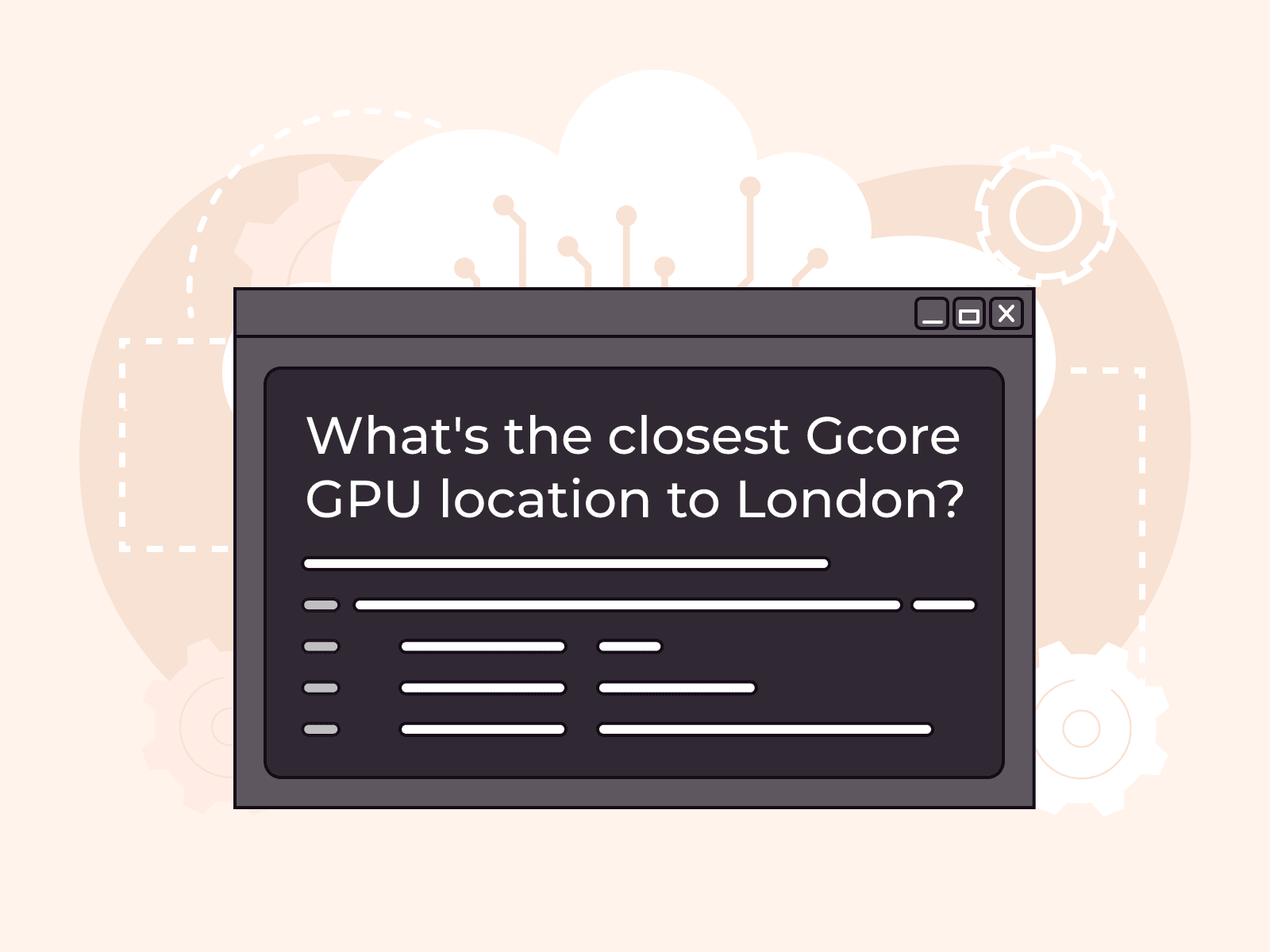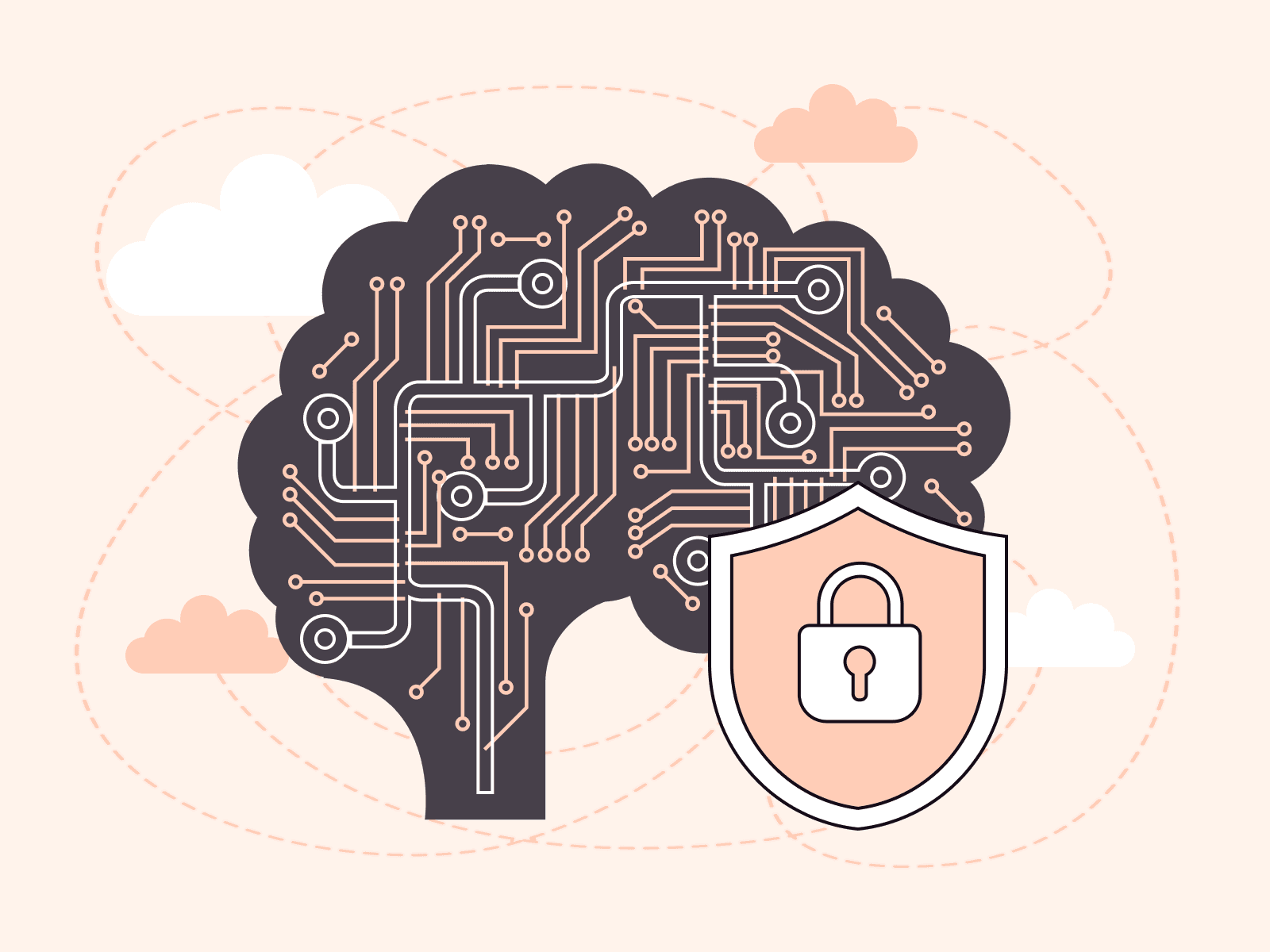Artificial intelligence (AI) inference is what happens when a trained AI model is used to predict outcomes from new, unseen data. While training focuses on learning from historical datasets, inference is about putting that learned knowledge into action—such as identifying production bottlenecks before they happen, converting speech to text, or guiding self-driving cars in real time. This article walks you through the basics of AI inference and shows how to get started.
What is AI inference?
AI inference is the application phase of artificial intelligence. Once a model has been trained on large datasets, it shifts from “learning mode” to “doing mode”—providing predictions or decisions from new data inputs.
For example, an e-commerce platform with a model trained on purchasing behavior uses inference to personalize recommendations for each site visitor. Without re-training from scratch, the model quickly adapts to new browsing patterns and purchasing signals, offering instant, relevant suggestions.
By enabling actionable insights, inference is transforming how businesses and technologies function, empowering relevance and instant responsiveness in an increasingly data-driven world.
How does AI inference work? A practical guide
AI inference has four steps: data preparation, model loading, processing and prediction, and output generation.
#1 Data preparation
The first step involves transforming raw input—such as text, images, or numerical data—into a format that the AI model can process. For instance, customer feedback might be converted into numerical representations of words and patterns, or an image could be resized and normalized. Proper data preparation ensures that the AI model can effectively understand and analyze the input. For businesses, this means making sure that input data is clean, well-structured, and formatted according to the model’s requirements.
#2 Model loading
Once the input data is ready, the trained AI model is loaded into memory. This model, equipped with patterns and relationships learned during training, acts as the foundation for predictions and decisions.
Businesses must make sure that their infrastructure is capable of quickly loading and deploying AI models, especially during high-demand periods. We simplify this process by providing a high-performance platform with global scalability. Your models are loaded and operational in seconds, whether you’re using a custom model or an open-source one.
#3 Processing and prediction
In this step, the prepared data is passed through the model’s neural networks, which apply learned patterns to generate insights or predictions. For example, a customer service AI might analyze incoming messages to determine if they express satisfaction or frustration.
The speed and accuracy of this stage depend on access to low-latency infrastructure capable of handling complex calculations. Our edge inference solution means data processing happens close to the source, reducing latency and enabling real-time decision making.
#4 Output generation
The final stage translates the model’s mathematical outputs into meaningful insights, such as predictions, labels, or recommendations. These outputs must be integrated into business workflows or customer-facing applications in a way that’s easy to understand and actionable.
We help streamline this step by offering APIs and integration tools that allow businesses to seamlessly incorporate inference results into their operations, so outputs are accessible and actionable in real time.
A real-life example
Let’s look at how this works in practice. Consider a retail business implementing AI for inventory management. The system continuously:
- Receives data from point-of-sale systems and warehouse scanners
- Processes this information through trained AI models
- Generates predictions about future inventory needs
- Adjusts order quantities and timing automatically
All of this happens in milliseconds, making real-time decisions possible. However, the speed and efficiency depend on choosing the right infrastructure for your needs.
The technology stack behind inference
To make this process work smoothly, specialized computing infrastructure and software need to work together.
Computing infrastructure
Modern AI inference relies on specialized hardware designed to process mathematical operations quickly. While training AI models often requires expensive, high-powered graphics processors (GPUs), inference can run on more cost-effective hardware options:
- CPUs: Suitable for smaller-scale applications
- Edge devices: For processing data locally on smartphones or IoT devices or other hardware closer to the data source, resulting in low latency and better privacy.
- Cloud-based inference servers: Designed for handling large-scale operations, enabling centralized processing and flexible scaling.
When evaluating computing infrastructure for AI, businesses should prioritize solutions that address latency, scalability, and ease of use. Edge inference capabilities are essential for deploying models closer to end users, which optimizes performance globally even during peak demand. Flexible access to diverse hardware options like GPUs, CPUs, and advanced accelerators ensures adaptability, while user-friendly tools and automated scaling enable seamless management and consistent performance.
Software optimization
The efficiency of inference depends heavily on software optimization. When done right, software optimization ensures that AI applications are fast, responsive, and scalable, making them practical for real-world use.
Look for the following to identify a solution that reduces inference processing time and supports optimized results:
- Model compression and optimization: The computational load is reduced and inference occurs faster—without sacrificing accuracy.
- Workload distribution and automation: This means that resources are allocated efficiently and cost-effectively.
- Integration: Look for APIs and tools that connect seamlessly with existing business systems.
The future of AI inference
We anticipate three major trends for the future of AI inference.
First, we’re seeing a dramatic shift toward specialized AI accelerators and custom silicon. New chips are being developed and existing ones optimized specifically for inference workloads. These purpose-built processors are delivering significant improvements in both performance and energy efficiency compared to traditional GPUs. This specialization is making AI inference more cost-effective and environmentally sustainable, particularly for companies running large-scale operations.
The second major trend is the emergence of lightweight, efficient models designed specifically for inference. While large language models like GPT-4 showcase the potential of AI, many businesses are finding that smaller, task-specific models can deliver comparable or better results for their particular needs. These “small language models” (SLMs) and domain-adapted models are trained on focused datasets and optimized for specific tasks, making them more practical for real-world deployment. This approach is particularly valuable for edge computing scenarios where computing resources are limited.
Finally, the infrastructure for AI inference is becoming more sophisticated and accessible. Advanced orchestration tools are automating the complex process of model deployment, scaling, and monitoring. These platforms can automatically optimize model performance based on factors like latency requirements, cost constraints, and traffic patterns. This automation is making it possible for companies to deploy AI solutions without maintaining large specialized teams of ML engineers.
Dive into more of our predictions for AI inference in 2025 and beyond in our dedicated article.
Accelerate inference adoption for your business
AI inference is rapidly becoming a differentiator for businesses. By applying trained AI models to new data, companies can make instant predictions, automate decision-making, and optimize operations across industries. However, achieving these benefits depends on having the right infrastructure and expertise behind the scenes. This is where the choice of inference provider plays a critical role. The provider’s infrastructure determines latency, scalability, and overall efficiency, which directly affect business outcomes. A well-equipped provider allows businesses to maximize the value of their AI investments.
At Gcore, we are uniquely positioned to meet these needs with our edge inference solution. Leveraging a secure, global network of over 180 points of presence equipped with NVIDIA GPUs, we deliver ultra-fast, low-latency inference capabilities. Intuitively deploy and scale open-source or custom models on our powerful platform that accelerates AI adoption for a competitive edge in an increasingly AI-driven world.
Get a complimentary consultation about your AI inference needs
Related articles
Subscribe to our newsletter
Get the latest industry trends, exclusive insights, and Gcore updates delivered straight to your inbox.






